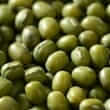Background
- Natto is a traditional Japanese food, prepared by fermenting boiled soybeans with the bacterium Bacillus subtilis. Nattokinase is an enzyme, which breaks down protein, and is purified from the cheese-like natto. Nattokinase was discovered in 1980 by a researcher who was trying to identify a natural agent that could successfully dissolve clots.
- People throughout Asia have consumed soybeans in a variety of traditional foods (including natto) for over 1,000 years. Due to their possible contribution to the observed low rates of heart disease in Asian countries, soy products such as natto have recently attracted attention in the West. As a result, nattokinase is a popular health food supplement.
- Nattokinase has been reported to have blood-thinning effects. Recently, research has indicated that nattokinase may have potential in the treatment of vein clots, or deep venous thrombosis (DVT), and high blood pressure, when used in combination with the standard therapies for these conditions.
References
- Cesarone MR, Belcaro G, Nicolaides AN, et al. Prevention of venous thrombosis in long-haul flights with Flite Tabs: the LONFLIT-FLITE randomized, controlled trial. Angiology 2003;54(5):531-539.
View Abstract - Chang YY, Liu JS, Lai SL, et al. Cerebellar hemorrhage provoked by combined use of nattokinase and aspirin in a patient with cerebral microbleeds. Intern Med 2008;47(5):467-469.
View Abstract - Fujita M, Hong K, Ito Y, et al. Thrombolytic effect of nattokinase on a chemically induced thrombosis model in rat. Biol Pharm Bull 1995;18(10):1387-1391.
View Abstract - Kazuya O, Shigeo I, Kenichim S. Report of research: an oral safety study of nattokinase containing food, Natural Super Kinase II: a randomized placebo controlled double-blind study. Progress in Medicine 2006;26(5):5.
- Kim JY, Gum SN, Paik JK, et al. Effects of nattokinase on blood pressure: a randomized, controlled trial. Hypertens Res 2008;31(8):1583-1588.
View Abstract - Law D, Zhang Z. Stabilization and target delivery of Nattokinase using compression coating. Drug Dev Ind Pharm 2007;33(5):495-503.
View Abstract - Maruyama and Sumi. Effect of Natto Diet on Blood Pressure. 1998.
- Pais E, Alexy T, Holsworth RE Jr., et al. Effects of nattokinase, a pro-fibrinolytic enzyme, on red blood cell aggregation and whole blood viscosity. Clin Hemorheol Microcirc 2006;35(1-2):139-142.
View Abstract - Sumi H, Hamada H, Nakanishi K, et al. Enhancement of the fibrinolytic activity in plasma by oral administration of nattokinase. Acta Haematol. 1990;84(3):139-143.
View Abstract - Sumi H, Hamada H, Tsushima H, et al. A novel fibrinolytic enzyme (nattokinase) in the vegetable cheese Natto; a typical and popular soybean food in the Japanese diet. Experientia 1987;43(10):1110-1111.
View Abstract - Suzuki Y, Kondo K, Ichise H, et al. Dietary supplementation with fermented soybeans suppresses intimal thickening. Nutrition 2003;19(3):261-264.
View Abstract - Suzuki Y, Kondo K, Matsumoto Y, et al. Dietary supplementation of fermented soybean, natto, suppresses intimal thickening and modulates the lysis of mural thrombi after endothelial injury in rat femoral artery. Life Sci 2003;73(10):1289-1298.
View Abstract - Tai MW, Sweet BV. Nattokinase for prevention of thrombosis. Am J Health Syst Pharm 6-15-2006;63(12):1121-1123.
View Abstract - Takano A, Hirata A, Ogasawara K, et al. Posterior vitreous detachment induced by nattokinase (subtilisin NAT): a novel enzyme for pharmacologic vitreolysis. Invest Ophthalmol Vis Sci 2006;47(5):2075-2079.
View Abstract - Urano T, Ihara H, Umemura K, et al. The profibrinolytic enzyme subtilisin NAT purified from Bacillus subtilis Cleaves and inactivates plasminogen activator inhibitor type 1. J Biol Chem 2001;276(27):24690-24696.
View Abstract







